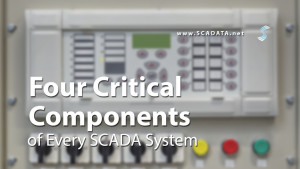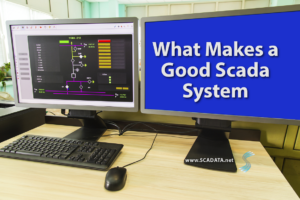If you work in any industry that involves automation, you are likely already familiar with SCADA. This kind of system, which is such an integral part of monitoring and automation, is commonplace now. But, that wasn�t always the case.
So how did we get to where we are now? Let�s take a closer look at the story of SCADA and how it�s affected the industries we see today.
What is SCADA?
SCADA stands for �Supervisory Control and Data Acquisition,� and refers to a system that is used to oversee various devices. This involves monitoring, controlling, and acquiring data. These devices are often (but not always) located in remote or inaccessible locations.
A SCADA system is generally composed of four different types of components: sensors (to collect data), conversion units (to receive and interpret data), master units (to manage the different parts, organize data, and provide an HMI), and a communication network (to make data exchanges possible). Check here for more information on what makes a good SCADA system.
A Brief Background of SCADA
SCADA systems first became popular in the 1960s, as there became more of a need to monitor and control remotely located devices. These early systems used mainframe computers and proprietary protocols. Early SCADA systems were not yet subject to national or industry-wide standards
They were also fairly expensive to run. In contrast to modern SCADA, early systems required lots of human oversight to make decisions and to keep everything going.
However, this was still less expensive than what everyone had been doing before. Before remote monitoring systems had been developed, everything had to be done manually. Everything. In a water management system, that sometimes meant sending several people to go out to open or close valves in various locations to simply move the water around the system. Even with the necessary supervision, these systems were still a vast improvement on systems that didn’t utilize SCADA.
Problem-solving with SCADA
The introduction of SCADA systems to various industries has helped handle several different problems over the years.
- Lost time: Having to send people out to adjust everything manually takes up a lot of time which could be spent doing other things. And in situations where time is of the essence�like in the case of potential flooding or a machine breakdown�it�s important to know exactly where the problem is so you can fix it before more damage is done.
- Wasted money: They say time is money and that is certainly true here. Damages done because a problem wasn�t noticed (or fixed) in time can add up. Costs associated with hiring more employees to go out and check on every device that might be malfunctioning can also be significant. If you have a solid system monitoring what�s going on, you can address the problem quickly and save yourself some money.
- Inaccessible locations: Having to send a person to check on a device creates physical limitations. It only makes sense to go so far before the time and money involved simply doesn’t make sense. But with a SCADA system, remotely monitoring difficult-to-reach locations is much easier. Yes, you might still have to access those devices occasionally, but you�ll also know when that�s actually necessary, which saves you an unnecessary hassle.
Industry applications of SCADA
SCADA systems are used in a number of different industries, particularly for tasks that are impractical for human operators. This can be due to several factors, including accessibility, complexity, or necessary reaction time.
Industries that commonly use SCADA systems include:
- Water and sewage management: Here, SCADA is used to monitor and regulate several different things, including water flow, water levels, the state of lift stations, pipe pressure, etc.
- Traffic signals: SCADA can be used to regulate traffic lights, manage the flow of traffic, etc.
- Food Production: Maintaining proper temperatures is very important when making and processing food, so SCADA systems are often used to regulate temperatures.
- Manufacturing: Here SCADA is used to regulate automation/robots, monitor processes, and maintain quality control.
Looking toward the future
As innovations continue to be made in technology, the SCADA systems that we know and use will no doubt change, perhaps allowing even more automation of tasks, user mobility, and an increase in security measures. Hopefully, changes will allow us to resolve problems our current systems might not be able to handle�yet.




